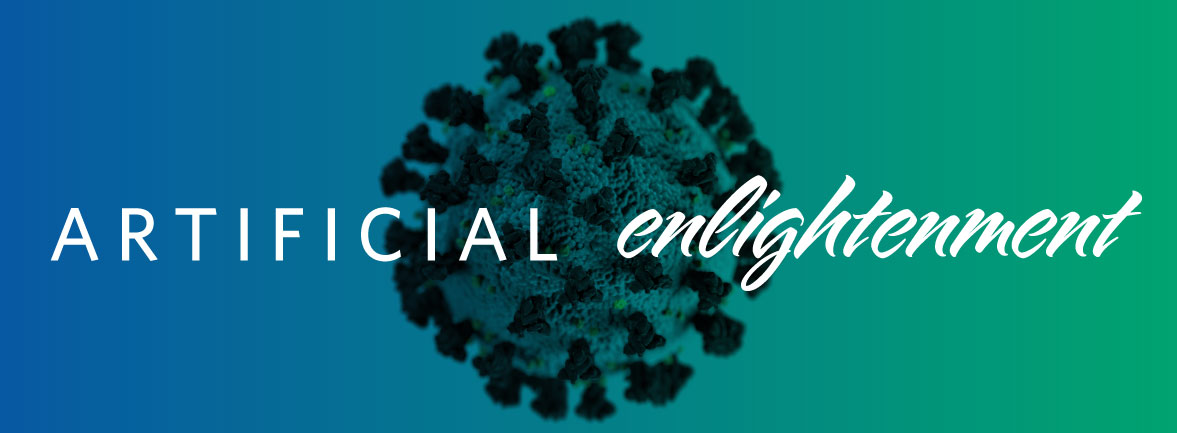Leveraging "Artificial Enlightenment" in the Fight Against COVID-19

This article is the second in a series on the concept of “artificial enlightenment” (AE). To learn more about AE and how it is distinct from artificial intelligence (AI), click here.
In my first article on artificial enlightenment, published in February 2020, I described how using the tools of artificial intelligence to analyze granular data in real-time could help provide people and organizations with personalized, in situ insights to inform and improve their daily lives and work. After sharing a few examples of how AE-like technology is being deployed around the world—including at Citi—I closed with a note about how AE could help individuals navigate the COVID-19 pandemic.
Since then, the need for such technology has only grown. As of this writing SARS-CoV-2 has infected over 24 million people worldwide, killing over 800,000 and causing widespread business shutdowns that have led to rampant job loss and a global economic collapse. Despite these shutdowns, in many regions the virus continues to spread rapidly.
One significant reason for the ongoing surge is the disconnect between public health goals and the individual actions on which they rest. Public health officials agree that the best way to slow the spread of COVID-19 is through sheltering in place, social distancing, and wearing masks—all collective initiatives that require individual people to make individual choices that benefit their communities but place additional burdens on them.
This poses questions of personal motivation, particularly in individualistic societies such as the U.S. By and large, people are more motivated by palpable, immediate threats than they are by abstract fears—and despite its massive global impact, COVID-19 remains for most people an intangible concept that does not necessarily pose any danger to them or their loved ones. In other words, people simply don’t know if, when, and where they might be in danger of contracting or transmitting the virus. Faced with an undetectable threat and lacking access to data and guidance pertinent to their specific situation, they have no way of judging their in situ risk levels—thus, it is no surprise that many choose not to follow public health protocols.
This is where artificial enlightenment comes in. Though COVID-19 data is abundant and readily accessible, most of that data is aggregated at the county level or higher—a scale too large to be meaningful to an individual on the ground. And though governments and organizations worldwide are leveraging artificial intelligence to inform policy decisions and combat the disease, none have sought to apply these tools to the core question that motivates most people’s actions: what are my odds of contracting COVID-19 right here and now, and what can I do to improve those odds?
An artificial enlightenment approach has the potential to help people answer that question.
By analyzing Big Data on a hyper-local level, AE technology could provide insights and risk analysis personalized to the individual and their particular situation in that moment.
An AE-based smartphone app, for example, could leverage real-time data on local infection and transmission rates, mask usage, social distancing policies, population density, mobility/walkability, and more to create a place-specific risk score. Users who opt to input personal information such as age, household size, proximity to essential workers, and medical history would get a personally tuned risk score. Either way such a score could help people determine:
- Is it safe for me to go to the grocery store right now?
- Should I ride the bus or the train to my destination?
- When is the best time to walk my dog, and where?
Though of course no person or piece of technology can guarantee a positive outcome every time, an AE-driven “COVID-19 navigation app” could drive home the risk of certain activities and/or areas and suggest plans, routes, and timelines that may be safer. By providing people with more agency, freedom, and flexibility in how they respond to the threat of COVID-19, such an app could help align personal safety with public health—leading to more effective, sustainable mitigation efforts based not on government orders but on grassroots investment.
It goes without saying that an AE-based app would be incredibly difficult to build, and like other COVID-19 tracking apps could present significant privacy and bias issues. Despite those legitimate concerns, the fact remains that we have the necessary data and technology to develop an app like this now—all we need is the right team with the right support to do it.
For more on artificial enlightenment, click here.
